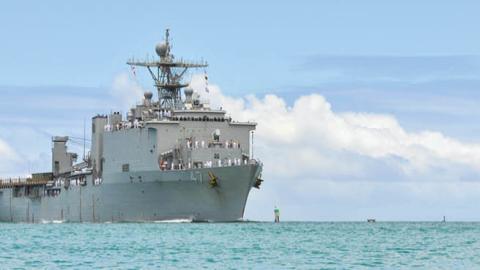China poses the most direct challenge to America’s international position since the Soviet Union. True, since 2016, the U.S. public has become increasingly aware of the problem. However, there is little understanding of the nature of China’s threat. At its core, Sino-American competition is not purely an economic or ideological struggle, but a strategic contest for military dominance. To survive, the United States must win this struggle by deterring Chinese military action before conflict or by defeating it in wartime. Any successful deterrence will require an understanding of Chinese and American strategy, force structure, and vulnerabilities.
Geographic realities render the western Pacific the predominant theater of confrontation. Historically, no Asian power has successfully achieved Indo-Pacific hegemony. Nonetheless, China’s objective is to dominate the Indo-Pacific’s maritime trade, thereby making itself a regional hegemon: Three-fifths of global maritime trade and nearly a quarter of total global trade today passes through the South China Sea. Controlling this waterway’s entrances and exits would give China far more than regional power, belying any assumption that Chinese objectives are merely local. China strives not for a multipolar, chaotic world, but a world in which it can safeguard its economic and political interests working through local affiliates and wielding global military power. But China, or more accurately the Chinese Communist Party (CCP) and its armed wing, the People’s Liberation Army (PLA), wishes to fight a very specific sort of war based upon China’s internal weaknesses and strategic priorities.
The reforms that the CCP under Deng Xiaoping began ushering in after 1978 enabled China’s accession to the World Trade Organization and its so-called “Economic Miracle.” Given that the CCP has retained informal control of China’s financial behemoths, transforming them into state proxies through a patronage system, Chinese economic growth remains fundamentally limited. With China’s current emphasis on construction, mineral and oil extraction, and high technology, the Chinese economy requires material imports to survive. And the Chinese people require economic growth in return for their acquiescence to the CCP’s central planning—hence the CCP’s pervasive fear of an economic downturn.
Read the full article in American Purpose















